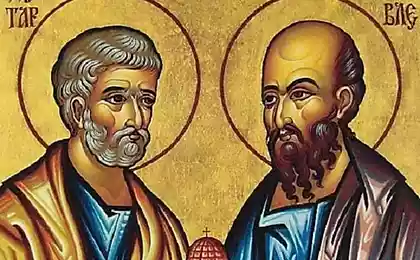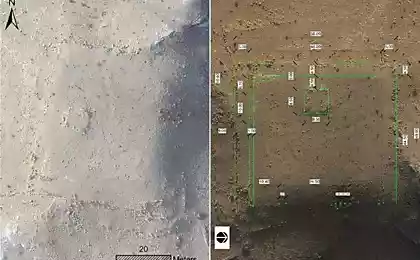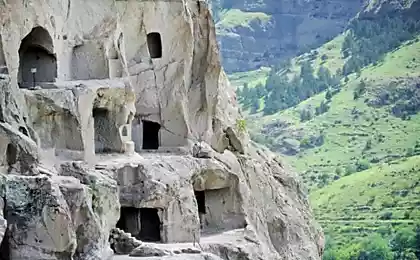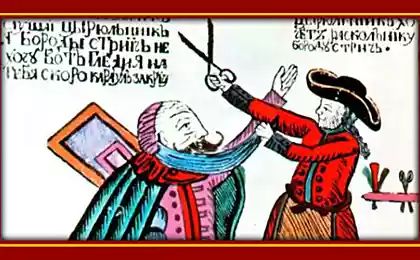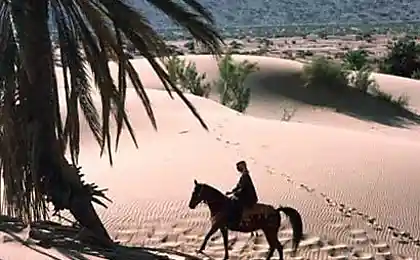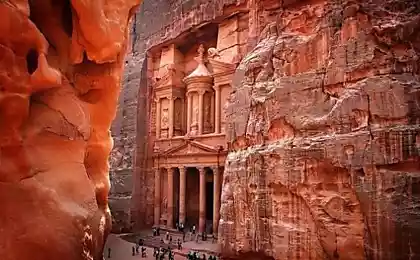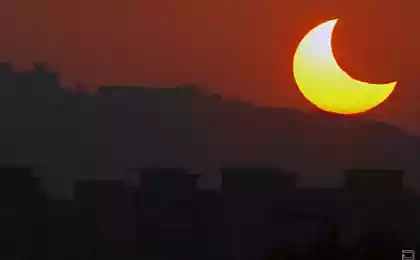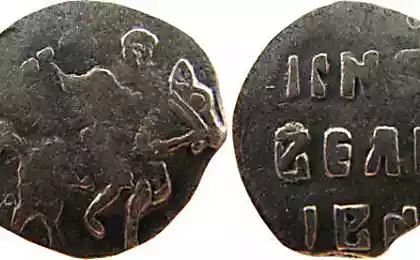618
Petra (Jordan) (13 photos)
Continuing the theme of travel to Yaplakal.kom!
Here you can visit in Prague's Lesser Town, and here to walk on Vasilyevsky Island.
Visit the open air museum in Germany or take a look at the magical land of Scotland.
View the largest statue of the world, or to see Moscow bird's-eye view.
Today we will visit Jordan.
Get ready ... Let's go! ..
Writes volg_vistex
When were in Sharm, we take a tour on one day in Petra, which is in the neighboring country - Jordan. Forty minutes into the flight by plane over the Red Sea and we were in the southern port of Jordan - Aqaba. Incidentally, in Jordan only two airports - one in the capital - Amman, the other - just in Aqaba.
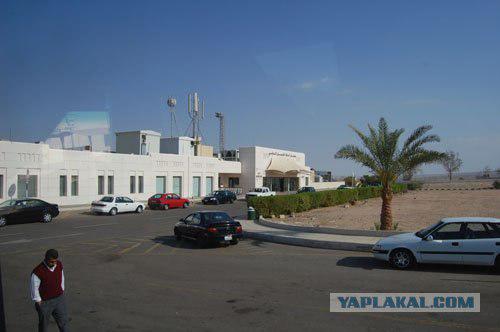
Aqaba - a small town, you can tell a tourist center in the south. That's where the borders of three states - Egypt, Jordan and Israel. Just a couple of kilometers from the Israeli city of Aqaba is - Eilat. And by the way, Aqaba is the world's largest flagpole length of 137 meters. But the flag itself has dimensions of 60 by 30 meters (if not mistaken).
This Aqaba International Airport. From it, we boarded the bus and drove for two hours inland to Petra - a city of stones.
In the background is just Eilat

Here the road. Say - Jordan is very good roads. As a guide, corruption on the road there is little, because cops are rightful allocations from the budget of the amount of fines.

Across the Jordan, you can see the portraits of the current head of state - King Abdullah II
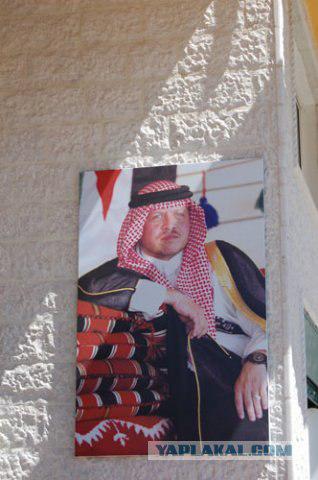
But this is precisely the Petra Mountains.
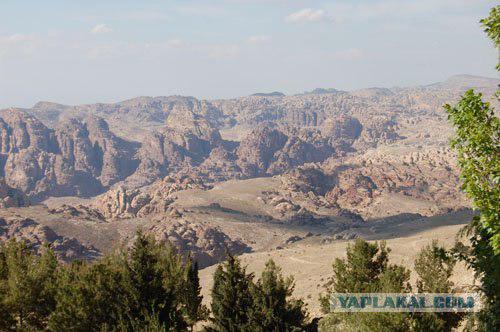
A bit of history:
Peter was located at the crossroads of two important trade routes: one connected the Red Sea with Damascus, the other - the Persian Gulf with Gaza near the Mediterranean coast. Dispatched by the Gulf caravans laden with precious spices, weeks had bravely endure the rigors of the Arabian desert until they reached the coolness of the narrow Siq, leading to a long-awaited Peter. There travelers find food, shelter and cool invigorating water. According to the Roman historian Pliny the inhabitants of Petra tourism business was very profitable, because in addition to payment for housing and food for camels, needed gifts for the guards, the gatekeepers, ministers and servants of the temple of the king. But the spices and perfumes sold in rich European cities, brought fabulous profits, so the merchants did not stint on expenses. Hundreds of years of trade brought great wealth Peter. But when the Romans opened sea routes to the East, the overland spice trade came to naught, and Peter gradually empty, lost in the sands. Many buildings of Petra erected at different times and under different masters of the city, among which were Edomites (18-2 c. BC), the Nabateans (2 BC - 106 BC) Romans (106-395 BC.), Byzantines and Arabs. In the 12th century BC they owned the Crusaders. Near the ancient theater where you can see the buildings of the Edomites or the Nabataeans. Monuments also erected after the 6 century BC there is little, because at that time the city has lost its significance.
Entrance to the canyon.

This underground water. Each year, the level of rainfall in Petra is only about 15 centimeters. To get water, locals cut down the channels and reservoirs in the rocks. Over time, almost every drop of rain in Petra and its surroundings collected and stored. Thanks to the water, which the inhabitants of Petra expertly maintained, they could grow crops and breed camels. In addition, they were able to build a city - a center of trade. Until now, all over the Siq the winding stone canals flowing water.
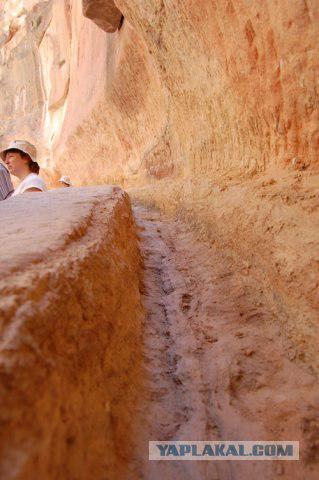
Inside the canyon
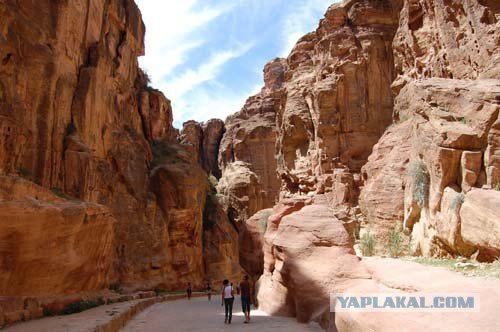
Here it is - the Treasury. When tourists pass through the Siq cool kilometer long, around the corner they offer Treasury - a majestic building with a facade, carved out of a huge rock. This is one of the best preserved buildings of the first century.
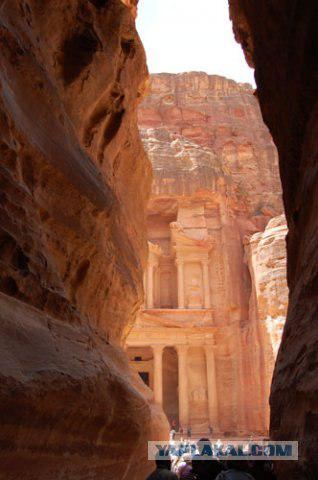
The building is crowned by a huge stone urn, which supposedly stored gold and precious stones - hence the name "Treasury".

Here is such an amphitheater, 2 thousand years, though! Canyon gradually expanded, and tourists come in natural amphitheater of sandstone walls in which many caves. But the thing that catches the eye - it is carved into the rock tombs are certainly willing to get tourists. Colonnade and amphitheater indicate the presence of the Romans in the city in the first and second centuries.
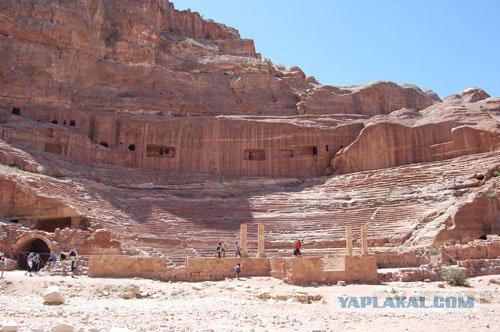
But this at home!
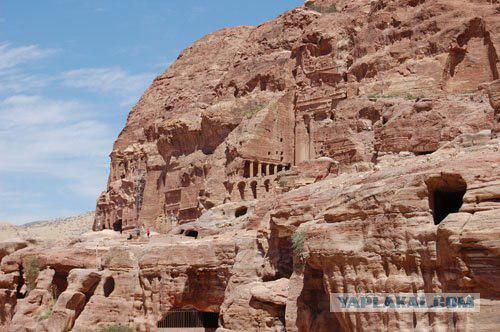
Simply beautiful!
That was a day trip! I will say one thing for sure - if you have a chance to go to Petra - do not miss it, go necessarily!
ZY By the way, here you can read more about zakoldovanom city of Petra.
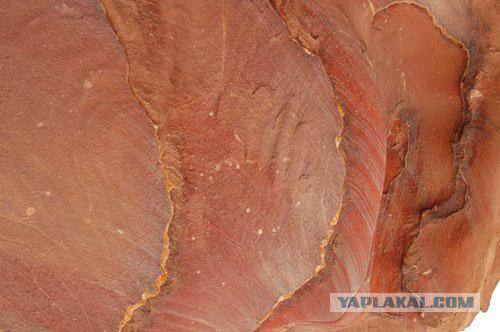
Source:
Here you can visit in Prague's Lesser Town, and here to walk on Vasilyevsky Island.
Visit the open air museum in Germany or take a look at the magical land of Scotland.
View the largest statue of the world, or to see Moscow bird's-eye view.
Today we will visit Jordan.
Get ready ... Let's go! ..
Writes volg_vistex
When were in Sharm, we take a tour on one day in Petra, which is in the neighboring country - Jordan. Forty minutes into the flight by plane over the Red Sea and we were in the southern port of Jordan - Aqaba. Incidentally, in Jordan only two airports - one in the capital - Amman, the other - just in Aqaba.

Aqaba - a small town, you can tell a tourist center in the south. That's where the borders of three states - Egypt, Jordan and Israel. Just a couple of kilometers from the Israeli city of Aqaba is - Eilat. And by the way, Aqaba is the world's largest flagpole length of 137 meters. But the flag itself has dimensions of 60 by 30 meters (if not mistaken).
This Aqaba International Airport. From it, we boarded the bus and drove for two hours inland to Petra - a city of stones.
In the background is just Eilat

Here the road. Say - Jordan is very good roads. As a guide, corruption on the road there is little, because cops are rightful allocations from the budget of the amount of fines.

Across the Jordan, you can see the portraits of the current head of state - King Abdullah II

But this is precisely the Petra Mountains.

A bit of history:
Peter was located at the crossroads of two important trade routes: one connected the Red Sea with Damascus, the other - the Persian Gulf with Gaza near the Mediterranean coast. Dispatched by the Gulf caravans laden with precious spices, weeks had bravely endure the rigors of the Arabian desert until they reached the coolness of the narrow Siq, leading to a long-awaited Peter. There travelers find food, shelter and cool invigorating water. According to the Roman historian Pliny the inhabitants of Petra tourism business was very profitable, because in addition to payment for housing and food for camels, needed gifts for the guards, the gatekeepers, ministers and servants of the temple of the king. But the spices and perfumes sold in rich European cities, brought fabulous profits, so the merchants did not stint on expenses. Hundreds of years of trade brought great wealth Peter. But when the Romans opened sea routes to the East, the overland spice trade came to naught, and Peter gradually empty, lost in the sands. Many buildings of Petra erected at different times and under different masters of the city, among which were Edomites (18-2 c. BC), the Nabateans (2 BC - 106 BC) Romans (106-395 BC.), Byzantines and Arabs. In the 12th century BC they owned the Crusaders. Near the ancient theater where you can see the buildings of the Edomites or the Nabataeans. Monuments also erected after the 6 century BC there is little, because at that time the city has lost its significance.
Entrance to the canyon.

This underground water. Each year, the level of rainfall in Petra is only about 15 centimeters. To get water, locals cut down the channels and reservoirs in the rocks. Over time, almost every drop of rain in Petra and its surroundings collected and stored. Thanks to the water, which the inhabitants of Petra expertly maintained, they could grow crops and breed camels. In addition, they were able to build a city - a center of trade. Until now, all over the Siq the winding stone canals flowing water.

Inside the canyon

Here it is - the Treasury. When tourists pass through the Siq cool kilometer long, around the corner they offer Treasury - a majestic building with a facade, carved out of a huge rock. This is one of the best preserved buildings of the first century.

The building is crowned by a huge stone urn, which supposedly stored gold and precious stones - hence the name "Treasury".

Here is such an amphitheater, 2 thousand years, though! Canyon gradually expanded, and tourists come in natural amphitheater of sandstone walls in which many caves. But the thing that catches the eye - it is carved into the rock tombs are certainly willing to get tourists. Colonnade and amphitheater indicate the presence of the Romans in the city in the first and second centuries.

But this at home!

Simply beautiful!
That was a day trip! I will say one thing for sure - if you have a chance to go to Petra - do not miss it, go necessarily!
ZY By the way, here you can read more about zakoldovanom city of Petra.

Source:





